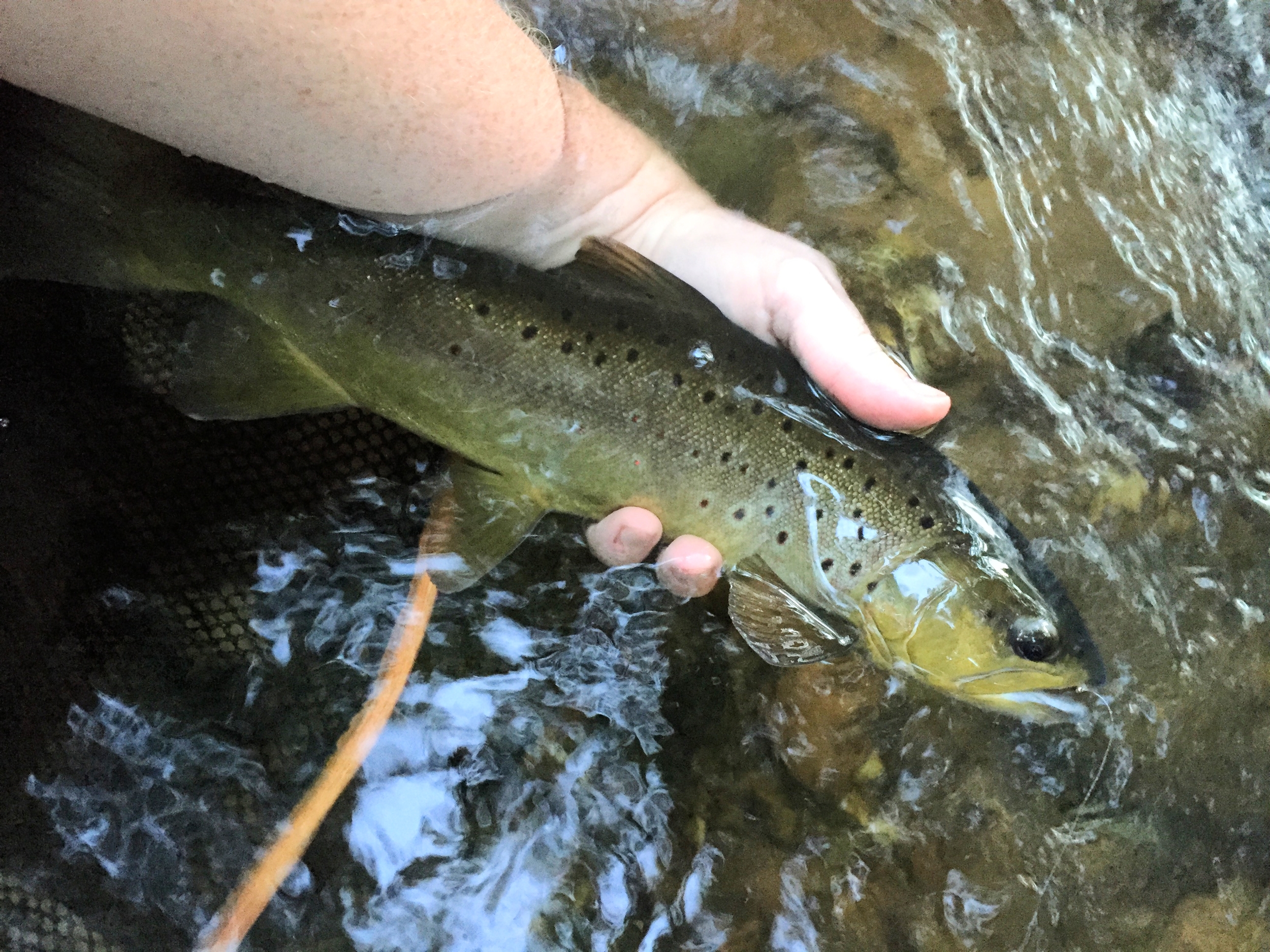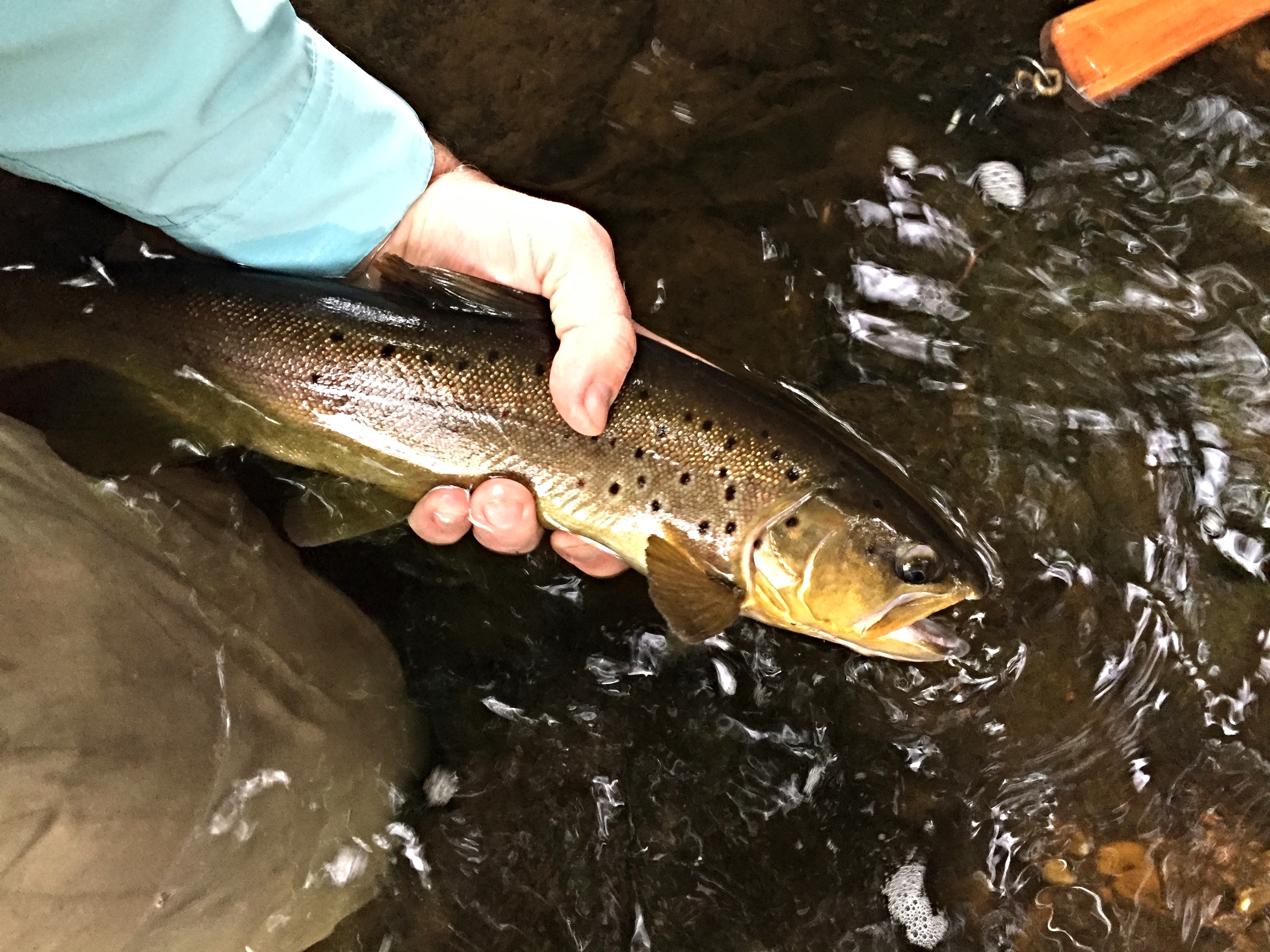Last night, I went out to enjoy some time on the river. While it was a nice evening overall one thing happened which ruined the tranquility of the night. At one point a fish, a dead fish, floated on by from some point unknown upstream. This got me pretty upset and while there certainly could be more than one explanation, it is most likely due to the improper handling of the fish.
Allow me to give you some background on this local fishery. A good portion of it is catch and release for most if not all year long. Starting this month even areas where a 2 fish limit exists, came under catch and release regulations. This is what leads me to be angry at the death of this fish.
Our area, like most of the country it seems, has been experiencing a lack of rain this summer. This means our rivers are much lower than many would like to see. These lower flows combined with very warm weather has led to higher water temperatures. Because this is a trout fishery, water flow and temperatures are especially important to the health of these magnificent creatures. We figured this would be a good time to share some tips about catch and release techniques, which benefit the fish and us all.
Good catch and release tactics start with your gear. Make sure your gear is properly matched for the target species. In other words, your rod and line should not be too light. This will allow you to land the fish as quickly as possible without playing the fish to exhaustion. Next, look to your hook. Fish either a barbless hook or pinch the barb down. This allows you to remove the hook from the fish much quicker, while leaving the fish in the water. This will also make it easier to remove the hook from you or your clothing if you have an errant cast. Carry a hook removal tool also to assist in case you have a pesky hook. Finally, under gear let us talk about your net. Get a rubber net. Either, buy a new one or get a replacement bag for yours. These rubber nets are less abrasive on the fish and don’t get caught around the gills. Your hook won’t get caught in it either.
Now let’s talk about handling the fish. First off, if the waters are nearing 70 degrees don’t even think about fishing for cold water species like trout or their salmonid cousins. Stay off the water altogether or try targeting warm water species, such as bass and other panfish. Once the fish has been landed into your net (yes always use a net) be ready to take your picture. Before handling any fish make sure to wet your hand so you don’t remove its protective coating (this is a must!). It is recommended to avoid any air exposure by keeping the fish in the water the entire time before releasing. Think of being forced to hold your breath after a race. If you have a friend who is to photograph the fish have them get the camera ready while you fight the fish. Then when it comes to taking the photograph allow them to call out the timing so if you do lift the fish up momentarily it is only for 3-5 seconds and hold the fish low over the water. If you are going to take multiple photos submerge the fish back in the water fully between photos. Gripping the fish requires extra care as fish have sensitive internal organs. If the fish is large enough, grip the just before the tail and cradle the fish gently just under the front fins. And take care to avoid touching the mouth and gills as this will interfere with the fish’s breathing.
Finally, you’re ready to release the fish or are you? You should take a few moments and revive the fish. In a river, this is done by keeping the fish submerged and holding its head facing upstream so water passes in the mouth and through the gills. In stillwater conditions, move the fish in a figure 8 pattern to simulate the water flowing through the fish’s gills. One common mistake is moving the fish back and forth in the water to revive. The backwards movement doesn’t do anything for the fish’s breathing and in fact may actually cause harm to the fish. Once the fish shows coordinated control of its fins it is safe to allow the fish to just swim away on its own. Congratulations. You’ve safely released the fish and now it can go on and grow bigger for the next time.


Catch and release practices are proven to work. We know of a group of local fly fishers which has pictures of the same fish three years running. The key is to be extra cautious as you’re dealing with a living creature. We recommend you take a step further and follow “Keep’em Wet” principles. Many of these were outlined in the above article, but you can learn more by checking out their website and this article by Dr. Andy Danylchuk.
Thanks for reading all the way through. If you’re practicing catch and release fishing we’d love to hear from you in the comments. Let us know what you’re doing and if you had the awesome privilege of catching the same fish more than once.



